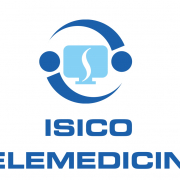Scientific Exercise Approach to Scoliosis in Adolescents With Mild Idiopathic Scoliosis: A Controlled Clinical Trial
Gözde Yagcı, Halil Gökhan Demirkıran
J Manipulative Physiol Ther. 2024 Oct 14:S0161-4754(24)00053-8.doi:10.1016/j.jmpt.2024.08.015
Abstract
Objective: This study aimed to investigate the effectiveness of Scientific Exercise Approach to Scoliosis (SEAS) protocol for patients with mild adolescent idiopathic scoliosis (AIS).
Method: (A controlled clinical trial) This preliminary study included 32 patients with AIS, aged 10 to 16 years, with Cobb angles ranging from 12° to 25°. The participants were divided into 2 groups: the SEAS group (n = 21) and standard care (n = 11). We assessed Cobb angles via radiographs, axial trunk rotation using the Adams test, spinal deformity from various perspectives with the Spinal Appearance Questionnaire (SAQ), and health-related quality of life with the Scoliosis Research Society-22 (SRS-22) questionnaire, both before and after 1 year of treatment.
Results: Repeated measure-ANOVA revealed significant group x time interactions for various parameters: Cobb angle (F1,30 = 35.757; P < .001), axial trunk rotation (F1,30 = 39.595; P < .001), SAQ appearance domain for the physiotherapist (F1,30 = 53.943; P < .001), SAQ appearance (F1,30= 14.054; P = .001), expectations (F1,30 = 9.103; P = .005) domains, the total score (F1,30 = 23.574; P < .001) for the child, and the SAQ appearance domain for the parent (F1,29 = 5.412; P = .027). There were no significant differences in SRS-22 scores between the 2 groups. The success rates for the SEAS group and the standard care group were 100% and 72.7%, respectively.
Conclusion: After 1 year, the group of patients with mild AIS who received the SEAS method showed greater improvements in the Cobb angle, axial trunk rotation, and spinal appearance than those who received standard care. This preliminary study suggests that larger trials should be completed.
Keywords: Body; Exercise Therapy; Physical Appearance; Quality of Life; Scoliosis.
Copyright © 2024. Published by Elsevier Inc.






Leave a Reply
Want to join the discussion?Feel free to contribute!